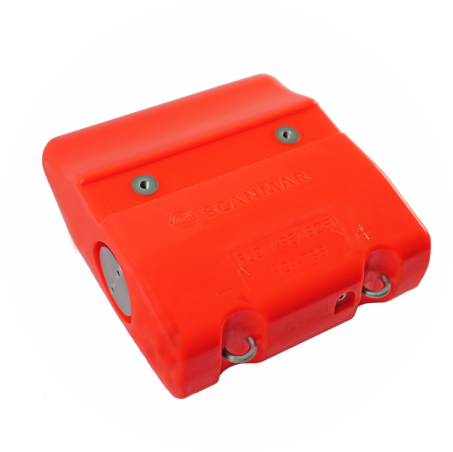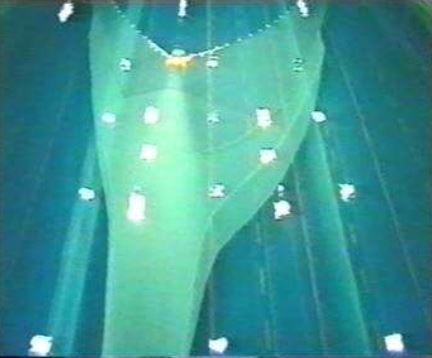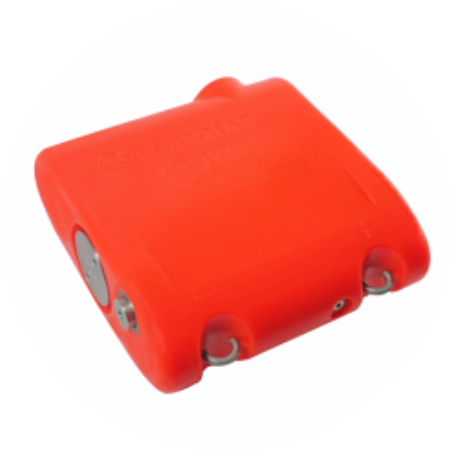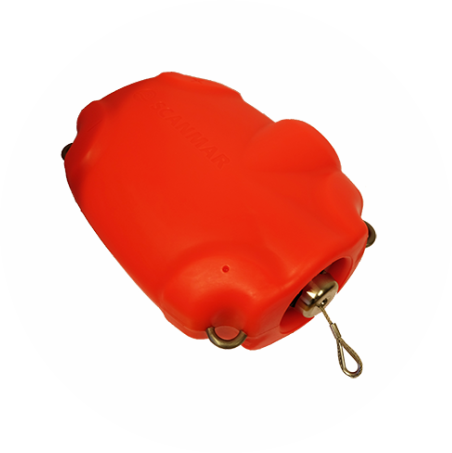ALL ARTICLES SCANMAR INFO:
Since 1985 a continuous reduction in the world’s fishing fleet has taken place. There are several reasons for this; overfishing, dramatic increase in oil prices, increased international regulations and control, and not least the political changes in former Soviet Union. Especially for the manufacturers of electronic equipment to the fishing fleet, this caused tremendous challenges and changes, as the number of deep sea new buildings worldwide dropped to virtually zero. One particular problem for the manufacturers of electronic equipment is the amount of money required to develop and utilize new technology; computer-, display-, cellphone, and battery technology, which just became available. With a disappearing market, there was no money available for new developments, which was highly required, and consequently, during the next decades all the major suppliers of fish finding products in Asia, Germany, UK, Norway and the United States of America left the industry or downscaled considerably. The surviving companies were facing increased concentration on echo sounders and sonars, which actually led to such products also being developed for smaller fishing vessels and pleasure crafts.
Even if this article is called “The history of Scanmar”, it is actually much more; the history of how the idea of Cable Free Catch Control Systems was established, extreme product/technology requirements, the challenges of building up a worldwide network, and not least how to convince and prove to the fishermen that this new product will be profitable to them. Still, maybe a look at where we are today; the state of our technology, new patents and products that point into the future, is of most interest. While young fishermen know Scanmar as a world leading company in Cable Free System for monitoring fishing gear and Catch Control – Your Eyes Under Water, the older generations also remember the simple first generation cabinets; the 4000 series, indicating the operation frequency of 40 kHz, and the single functional “Pingers” measuring Catch, Depth and Temperature. During the almost 40 years Scanmar has existed, most of the fishermen and fishery scientists around the world have learned to know Scanmar, either by using Scanmar, reading about the company and products in Scanmar Info, personal contacts or as a combination of all of these.
Since Scanmar was established nearly 40 years ago, 50.000 sensors have been delivered to thousands of fishing vessels and Fishery Research vessels around the world. The establishment of Scanmar was the result of many trips on board different fishing vessels, mainly trawling, for various species of white fish, pelagic fish and shrimp, made by myself and my colleagues. Though it was obvious to us that it would be possible to increase catches by introducing new products for surveying the fishing gear and catching conditions, it never crossed the minds of most fishermen. Many would find this strange, but far from it. It is normal for most of us; when we have been doing things for a long time, it is hard to accept that there are better ways to do it. In this case, it is even more obvious: While the fishermen were very experienced in what they were doing, and made lots of changes with rigging and other things they thought would improve their catch, our minds were used to electronics, data and acoustics, so you could say we were trained in a completely different way of thinking. Apart from the challenge of developing advanced cable free signal transmission based on new unproven technology, strong protective plastic, reliable electronics etc., the main problem would be to tell fishermen how products they had never heard of, based on new technology, could help them increase catches and reduce costs. And how was it possible that Scanmar, a newly established company could invent such a product, when the big worldwide suppliers of electronic fish finders, from Norway, Japan, Germany and many other countries, had never been close to it. Understandably, it is difficult for a small Norwegian company, recently established, to visit 100 countries, to inform about a new product nobody had heard of, not to mention all the fishing ports in all these countries. Competent dealers did not exist since nobody had any knowledge of this type of product, and even worse, nobody would know how to use it in various fishing operations.
Everybody understands that functionality and reliability are key elements in products like Catch Control systems, and that supplier’s service and repair is absolute necessary for the vessel. If not, the result will be down time, lost income and increased costs. What many, however, does not really consider, when a system is bought for the first time, is the operating time of the sensors between charging, charging time, and the work of dismounting and mounting of sensors related to charging. This may come as a big surprise, and as a matter of fact, result in the need for a double set of sensor. When Scanmar developed the first generation sensors almost 40 years ago, the size of the sensors were of the outmost importance; they had to be small, light and easy to handle. Therefor the size of the battery package was limited. The first generation sensors was single function sensors, but even so it was mandatory to solve the battery in a way that gave longest possible operating time of the sensors, and shortest possible charging time. The solution seemed to be acceptable in most fisheries.
Scanmar’s dominating position amongst leading fishing companies and Fishery Research Institutes all over the world can easily be described in a few simple facts: Scanmar invented cable free Catch Systems. Scanmar has developed a huge range of sensors and functions the fishermen did not know that they needed, but now feel completely dependent of. Product quality, stable signal receiving, reliable information and profitable investments for the owners. Continuous product development including use of latest available technology and own R&D in specific relevant areas.
As most of you know, Scanmar invented the cable free Catch Control system almost 40 years ago, and from a simple system with few sensors, “Pingers”, the systems now consist of a wide range of sensors, and not least very advanced sensors as Trawl Eye, Trawlspeed and Symmetry sensors etc. When competitors ten years later started to enter the market, it was generally no new development, and many of the products introduced, failed due to lack of technology and simple solutions that did not met fishermen’s expectations. Scanmar has, ever since the start, put lots of efforts and money into development of new technology, new products and new functions. With the standing Scanmar has today, both regard to advanced technology, and not at least amongst fishing companies and Fishery Research Institutes around the world, and the many ideas Scanmar has for new products, new functions and technological solutions, our aim is to provide the fleet with new products that will further increase profit and reduce costs. The new solutions will be integrated with the existing Scanmar system, and therefore the quality of the products, in every way, including operation and signal processing, has to be at the highest level.
Wars are often the cradle of new technology, and hopefully there will later be applications of peaceful use for the human kind. Navigation equipment and Radio telephones are examples of this, and so are sonars and echo sounders. It is hard to imagine, if at all possible, how modern deep sea trawling could take place without such equipment, and maybe even more difficult to understand if it would be possible to catch large quantities of fish at costs making it affordable to the average family. The first primitive generations of such equipment have later been replaced by newer generations and technology, such as satellite positioning, navigation and communication. The first cable free Catch Control systems were developed by Scanmar Almost 40 years ago, but it was not a result of war time technology, but just as fascinating: The introduction of lap top computers and mobile telephones required small high powered battery cells and components and circuits with low power consumption. This was an important prerequisite for small sensors placed on fishing gear thousands of meters away from the fishing vessel.
Henning Skjold-Larsen, Scanmar A little more than 20 years ago the Ministry of Fisheries and the Far Eastern Russian fishing companies decided that the resources of Pandalus Borealis in Okhotsk Sea and Tartar Strait should be exploited by Russian fishing companies in opposition to the resources being exploited by foreign vessels, due to the policy in Soviet time, when Russian fisheries was focused on harvesting species for daily human consumption. Scanmar had been founded 15 years earlier, and had at the time, delivered more than 3000 Scanmar Catch Control Systems worldwide, and been established in Far East Russia for some years. Since the main target was Pandalus Borealis, which is an important specie in the North Atlantic, and Scanmar had vast experience in catching with single, as well as twin trawl, it was a natural choice for the fishing companies in Far East Russia to ask Scanmar for assistance when their fishing vessels should be upgraded and modernized.
Global warming, melting of polar ice, reduced catch of whales and seals are all elements that lead to change in size and composition of biomass. Over capacity in fishing fleets and over exploitation of key species lead to further development that is difficult to predict. There is often disparity between what fishermen record and what researchers observe a disparity that is exuberated in times of small quotas and difficult circumstances for many fishermen. There is little doubt about the need to significantly increase research efforts so that a viable fishery can be sustained for future generations. For 30 years Scanmar has delivered systems for monitoring the instruments used by fishing and research vessels, and among many other things it has been interesting to note how many research institutes have begun to understand that even small errors in the tools and how they are used lead to large errors in what is recorded. Scanmar representatives have participated in many charters and we have also received many reports and log files from Scanmar users. Therefore we have a good picture of commonly occurring errors. Let's look at some of the most common.
Since the breakthrough of information technology a few decades ago a big wave of information has flooded us, and it is almost impossible to keep abreast of everything going on, which is clearly shown by the rise and fall of new companies. In addition to the extraordinary emergence of new technology, good or bad, we see an accelerating rise of system-oriented solutions. Different products and technologies are connected together to provide users with greater value at a lower price than the products used independently of each other. No one could have avoided having noticed the incredible power struggle going on between the giants in the telecom and communications market, exemplified by Apple and Microsoft, to get the greatest possible breadth of product offering. When a product has been available for many years and there are many manufacturers competing, the experience is that products that are advanced also have the best user properties, longest life, etc. Cars are a good example of this, you can tell by used car prices. That is not the case when the new products are launched.
OUR CONTACTS:








